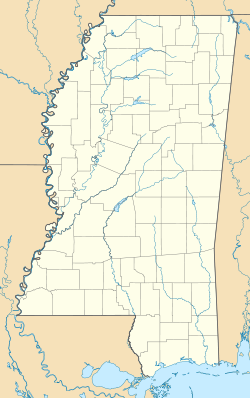
Millwood is an unincorporated community located in Clarke County, Virginia. Millwood is the home of many of Clarke County's most historic sites including the Burwell-Morgan Mill (1785), Carter Hall (1792), the Greenway Historic District, Long Branch (1811), Old Chapel (1790), and the River House. Project HOPE is based at Carter Hall.

Lower Brandon Plantation is located on the south shore of the James River in present-day Prince George County, Virginia.

Church Hill is a small unincorporated community in Jefferson County, Mississippi, United States. It is located eight miles east of the Mississippi River and approximately 18 miles north of Natchez at the intersection of highway 553 and Church Hill Road. Church Hill was a community of wealthy cotton planters before the American Civil War. Soil erosion, which had been going on since well before the Civil War, caused the area to decline into a poor farming community with none of the land under cultivation by 1999. The area is remarkable because its antebellum buildings are mostly intact with few modern buildings having been built.

The Emerald Mound Site, also known as the Selsertown site, is a Plaquemine culture Mississippian period archaeological site located on the Natchez Trace Parkway near Stanton, Mississippi, United States. The site dates from the period between 1200 and 1730 CE. It is the type site for the Emerald Phase of the Natchez Bluffs Plaquemine culture chronology and was still in use by the later historic Natchez people for their main ceremonial center. The platform mound is the second-largest Mississippian period earthwork in the country, after Monk's Mound at Cahokia, Illinois.

Carter Hall was the Millwood, Virginia, USA estate of Lt. Col. Nathaniel Burwell (1750–1814). It is located in the upper Shenandoah Valley, off Virginia Route 255 northeast of Millwood. The estate includes a grand plantation house, a great lawn, and terraced gardens, and has panoramic views in all directions. It is listed on the National Register of Historic Places.
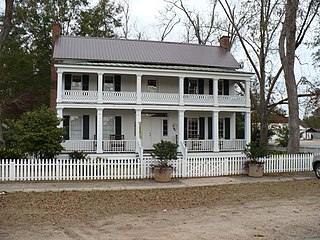
The Alston–Cobb House, now formally known as the Clarke County Historical Museum, is a historic house and local history museum in Grove Hill, Alabama. It was built in 1854 by Dr. Lemuel Lovett Alston as a Greek Revival I-house, a vernacular style also known in the South as Plantation Plain. It is one of only four examples of an I-house to survive intact in Clarke County. The Alston–Cobb House was added to the Alabama Register of Landmarks and Heritage on September 1, 1978, and to the National Register of Historic Places on April 30, 1979.
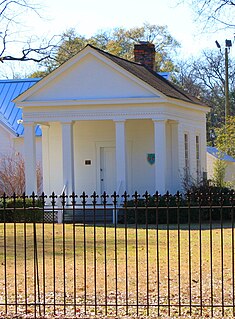
Roseland Plantation is a historic plantation complex site in Faunsdale, Alabama. The site is situated on a low hill at the end of a long driveway on the overgrown estate. It was added to the National Register of Historic Places on January 20, 1994 as a part of the Plantation Houses of the Alabama Canebrake and Their Associated Outbuildings Multiple Property Submission.
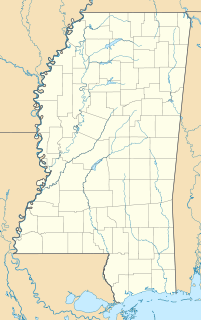
The Judge John L. Buckley House is a house in Enterprise, Mississippi listed on the National Register of Historic Places. The house is built in the bungalow style. Many of the bungalows built in Clarke County in the 1920s were one-story, undistinguished standardized housing. The Buckley House is more notable than these because of its detailing, which incorporated Colonial design elements. It is also somewhat larger, being one and a half stories tall, and it has a low-pitched roof with broad gables and a wraparound porch. It incorporates traditional design elements into a more modern residential design, and is one of the most sophisticated bungalow designs in Clarke County.

Fort Sinquefield is the historic site of a wooden stockade fortification in Clarke County, Alabama, near the modern town of Grove Hill. It was built by early Clarke County pioneers as protection during the Creek War and was attacked in 1813 by Creek warriors.
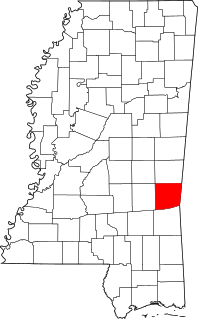
This is a list of the National Register of Historic Places listings in Clarke County, Mississippi.

De Soto is an unincorporated community in Clarke County, Mississippi, United States.

The Griffin–Spragins House is located in Refuge, Mississippi, approximately 10 mi (16 km) southwest of Greenville.
McGehee House may refer to:

The Cook-Sellers House in Desoto, Mississippi is a historic house built c. 1855.

Foster's Mound is a Plaquemine culture archaeological site located in Adams County, Mississippi northeast of Natchez off US 61. It is the type site for the Foster Phase of the Natchez Bluffs Plaquemine culture chronology. It was added to the NRHP on September 2, 1982 as NRIS number 82003091.
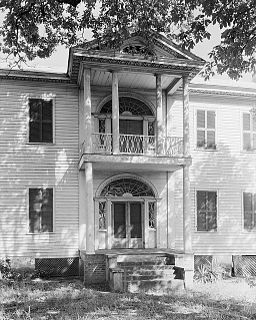
Riverdale is a historic plantation house near Selma, Dallas County, Alabama. Architectural historians consider it to be the "most elegant and refined house of its period in Dallas County." The two-story wood-frame house was built in the Federal-style in 1829. It is five bays wide, with a two-tiered, pedimented portico spanning the central bay. It was built by Virgil H. Gardner, a native of Jones County, Georgia, for his bride, Margaret Loise Aylett of Virginia. Their daughter, Mary Gardner, was married in the house in 1854 to Henry Quitman, son of former Mississippi governor John A. Quitman.

The Wyolah Plantation is a historic Southern plantation in Church Hill, Jefferson County, Mississippi. It is located off the Mississippi Highway 553.

The Forestdale Plantation, also known as the McGowan-Fatherree Plantation, is a historic plantation in Pachuta, Mississippi, US. It was built from 1855 to 1857 by three brothers, Hamilton, Elbert and Robert McGowan. It has been listed on the National Register of Historic Places since May 22, 1980.
The Langsdale Plantation, also known as Prairie Place, is a historic large forced-labor farm in Clarke County, Mississippi, USA. It has been listed on the National Register of Historic Places since May 22, 1980.

The Ward House is a historic plantation house in Enterprise, Mississippi, USA. It was built for W.A. Ward, a planter from South Carolina. It was designed in the Greek Revival architectural style, and it was completed in 1853. It has been listed on the National Register of Historic Places since May 22, 1980.
